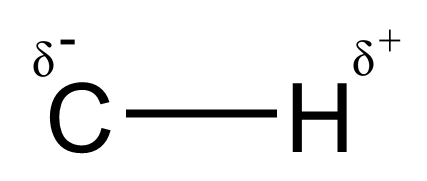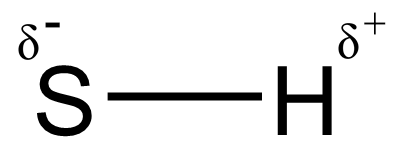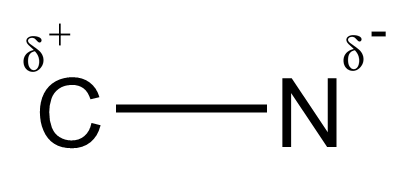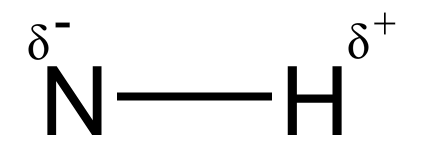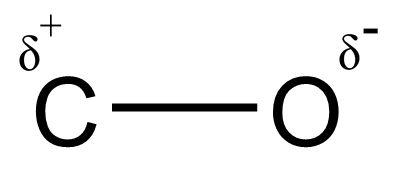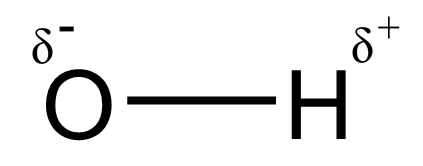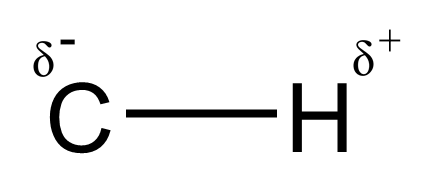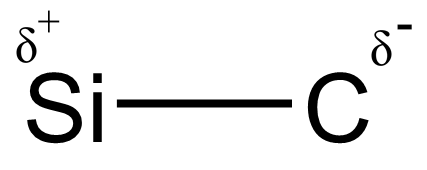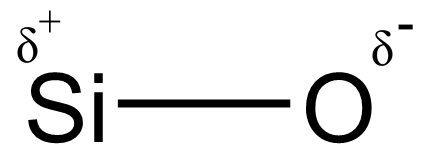9.3 – Covalent Bonding
Ionic bonding results from the electrostatic attraction of oppositely charged ions that are typically produced by the transfer of electrons between metallic and nonmetallic atoms. A different type of bonding results from the mutual attraction of atoms for a “shared” pair of electrons. Such bonds are called covalent bonds.
Compounds that contain covalent bonds exhibit different physical properties than ionic compounds. Because the attraction between molecules, which are electrically neutral, is weaker than that between electrically charged ions, covalent compounds generally have much lower melting and boiling points than ionic compounds. In fact, many covalent compounds are liquids or gases at room temperature, and, in their solid states, they are typically much softer than ionic solids. Furthermore, when ionic compounds are dissolved in water, it produces an aqueous solution that is a good conductor of electricity (due to the dissociation of the cations and anions). However, when covalent compounds are dissolved in water, they tend to ionize poorly or not at all, resulting in aqueous solutions of very weak conductivity. As pure substances, since they are electrically neutral, they are poor conductors of electricity in any state (pure liquid, solid, or gas).
Formation of Covalent Bonds
Nonmetal atoms frequently form covalent bonds with other nonmetal atoms. For example, the hydrogen molecule, H2, contains a covalent bond between its two hydrogen atoms. Figure 9.3.1 illustrates why this bond is formed. Starting on the far right, we have two separate hydrogen atoms with a particular potential energy, indicated by the red line. Along the x-axis is the distance between the two atoms. As the two atoms approach each other (moving left along the x-axis), their atomic orbitals begin to overlap. The single electrons on each hydrogen atom then interact with both atomic nuclei, occupying the space around both atoms. The strong attraction of each shared electron to both nuclei stabilizes the system, and the potential energy decreases as the bond distance decreases. If the atoms continue to approach each other, the positive charges in the two nuclei begin to repel each other, and the potential energy increases. The bond length is determined by the distance at which the lowest potential energy is achieved.

Figure 9.3.1. The potential energy of two separate hydrogen atoms (right) decreases as they approach each other, and the single electrons on each atom are shared to form a covalent bond. The bond length is the internuclear distance at which the lowest potential energy is achieved. These graphs, where potential energy is plotted as a function of internuclear distance, are known as Morse Curves.
It is essential to remember that energy must be added to break chemical bonds (an endothermic process), whereas forming chemical bonds releases energy (an exothermic process). In the case of H2, the covalent bond is very strong; a large amount of energy, 436 kJ, must be added to break the bonds in one mole of hydrogen molecules and cause the atoms to separate:
H2 (g) ⟶ 2H (g) ΔH = 436 kJ
Conversely, the same amount of energy is released when one mole of H2 molecules forms from two moles of H atoms:
2H (g) ⟶ H2 (g) ΔH = −436 kJ
Pure vs. Polar Covalent Bonds
If the atoms that form a covalent bond are identical, as in H2, Cl2, and other diatomic molecules, then the electrons in the bond must be shared equally. We refer to this as a pure covalent bond (or nonpolar covalent bond). Electrons shared in pure covalent bonds have an equal probability of being near each nucleus.
In the case of Cl2, each atom starts off with seven valence electrons, and each Cl shares one electron with the other, forming one covalent bond:
Cl + Cl → Cl2
The total number of electrons around each individual atom consists of six nonbonding electrons and two shared (i.e., bonding) electrons for eight total electrons, matching the number of valence electrons in the noble gas argon. Since the bonding atoms are identical, Cl2 also features a pure covalent bond.
When the atoms linked by a covalent bond are of different elements, the bonding electrons may still be shared, but no longer equally. Instead, the bonding electrons are more attracted to one atom than the other, giving rise to a shift of electron density toward that atom. This unequal distribution of electrons is known as a polar covalent bond, characterized by a partial positive charge on one atom and a partial negative charge on the other. The atom that attracts the electrons more strongly acquires the partial negative charge and vice versa. For example, the electrons in the H–Cl bond of a hydrogen chloride molecule spend more time near the chlorine atom than near the hydrogen atom. Thus, in an HCl molecule, the chlorine atom carries a partial negative charge and the hydrogen atom has a partial positive charge. Figure 9.3.2 shows the distribution of electrons in the H–Cl bond. Note that the shaded area around Cl is much larger than it is around H. Compare this to Figure 9.3.1, which shows the even distribution of electrons in the H2 nonpolar bond.

Figure 9.3.2. (a) The distribution of electron density in the HCl molecule is uneven. The electron density is greater around the chlorine nucleus. The small, black dots indicate the location of the hydrogen and chlorine nuclei in the molecule. (b) Symbols δ+ and δ– indicate the polarity of the H–Cl bond.
We sometimes designate the positive and negative atoms in a polar covalent bond using a lowercase Greek letter “delta,” δ, with a plus sign or minus sign to indicate whether the atom has a partial positive charge (δ+) or a partial negative charge (δ–). This symbolism is shown for the H–Cl molecule in Figure 9.3.2.
Electronegativity
Whether a bond is nonpolar or polar covalent is determined by a property of the bonding atoms called electronegativity. Electronegativity (EN) is a measure of the tendency of an atom to attract electrons (or electron density) towards itself. It determines how the shared electrons are distributed between the two atoms in a bond. The more strongly an atom attracts the electrons in its bonds, the larger its electronegativity. Electrons in a polar covalent bond are shifted toward the more electronegative atom; thus, the more electronegative atom is the one with the partial negative charge. The greater the difference in electronegativity, the more polarized the electron distribution and the larger the partial charges of the atoms.
Figure 9.3.4 shows the electronegativity values of the elements as proposed by one of the most famous chemists of the twentieth century: Linus Pauling (Figure 9.3.3). In general, electronegativity increases from left to right across a period in the periodic table and decreases down a group. Thus, the nonmetals, which lie in the upper right, tend to have the highest electronegativities, with fluorine the most electronegative element of all (EN = 4.0). Metals tend to be less electronegative elements, and the group 1 metals have the lowest electronegativities. Note that noble gases are excluded from this figure because these atoms usually do not share electrons with other atoms since they have a full valence shell. (While noble gas compounds such as XeO2 do exist, they can only be formed under extreme conditions, and thus they do not fit neatly into the general model of electronegativity.)

Figure 9.3.3. Linus Pauling (1901–1994) made many important contributions to the field of chemistry. He was also a prominent activist, publicizing issues related to health and nuclear weapons.
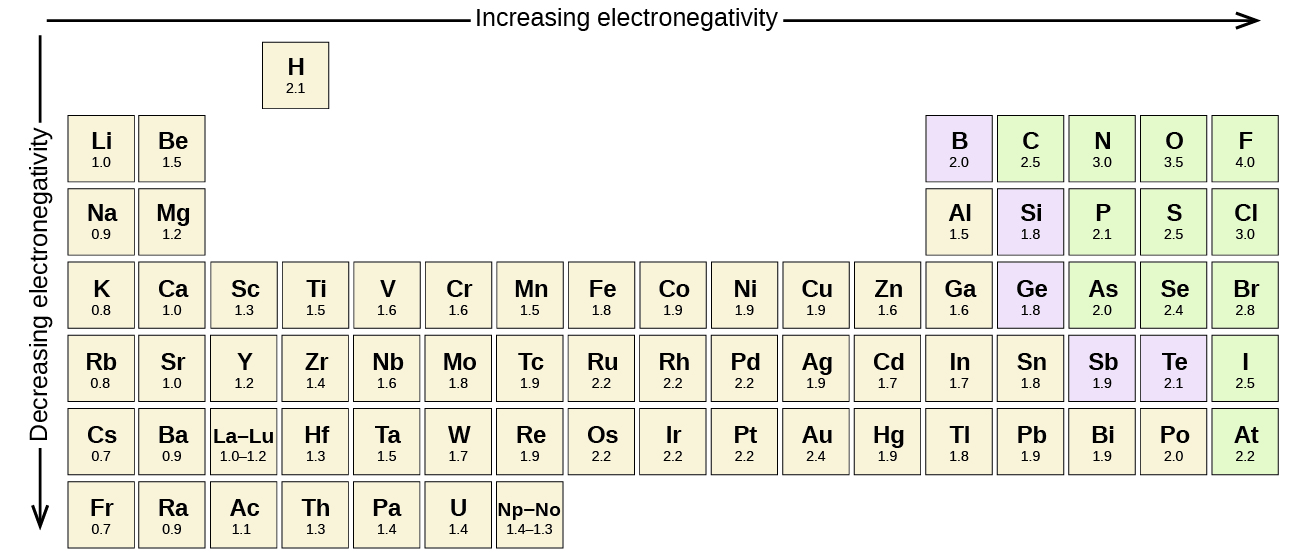
Figure 9.3.4. The electronegativity values derived by Pauling follow predictable periodic trends with the higher electronegativities toward the upper right of the periodic table.
Electronegativity versus Electron Affinity
We must be careful not to confuse electronegativity and electron affinity. The electron affinity of an element is a measurable physical quantity, namely, the energy released or absorbed when an isolated gas-phase atom acquires an electron, measured in kJ/mol (this is discussed in detail in section 8.7). Electronegativity, on the other hand, describes how tightly an atom attracts electrons in a bond. It is a dimensionless quantity that is calculated, not measured. Pauling derived the first electronegativity values by comparing the amounts of energy required to break different types of bonds. He chose an arbitrary relative scale, with values ranging from 0 to 4. You may encounter other tables of electronegativity values which may slightly differ from those derived by Pauling, due to differences in how those values were determined. In general, however, the periodic trends described above still hold true, regardless of how the EN values are defined.
Electronegativity and Bond Type
The absolute value of the difference in electronegativity (ΔEN) of two bonded atoms provides a rough measure of the polarity to be expected in the bond and, thus, the bond type. When the difference is very small or zero, the bond is covalent and nonpolar. When it is large, the bond is polar covalent or ionic. The absolute values of the electronegativity differences between the atoms in the bonds H–H, H–Cl, and Na–Cl are 0 (nonpolar), 0.9 (polar covalent), and 2.1 (ionic), respectively. The degree to which electrons are shared between atoms varies from completely equal (pure covalent bonding) to not at all (ionic bonding). Figure 9.3.5 shows the relationship between electronegativity difference and bond type.

Figure 9.3.5. As the electronegativity difference increases between two atoms, the bond becomes more ionic.
A rough approximation of the electronegativity differences associated with covalent, polar covalent, and ionic bonds is shown in Figure 9.3.5. It’s important to note that this table is just a general guide to determining the type of bond between atoms – many exceptions exist. For example, the H and F atoms in HF have an electronegativity difference of 1.9, and the N and H atoms in NH3 a difference of 0.9, yet both of these compounds form bonds that are considered polar covalent. Likewise, the Na and Cl atoms in NaCl have an electronegativity difference of 2.1, and the Mn and I atoms in MnI2 have a difference of 1.0, yet both of these substances form ionic compounds.
Hence, keep in mind that at the end of the day, the best guide to the covalent or ionic character of a bond is to consider the types of atoms involved and their relative positions in the periodic table. Bonds between two nonmetals are generally covalent; bonding between a metal and a nonmetal is often ionic.
Example 9.3.1 – Electronegativity and Bond Polarity
Bond polarities play an important role in determining the structure of proteins. Using the electronegativity values in Figure 9.3.4, arrange the following covalent bonds—all commonly found in amino acids—in order of increasing polarity. Then designate the positive and negative atoms using the symbols δ+ and δ–:
C–H, C–N, C–O, N–H, O–H, S–H
Solution
The polarity of these bonds increases as the absolute value of the electronegativity difference increases. The atom with the δ– designation is the more electronegative of the two. The table below shows these bonds in order of increasing polarity.
|
Bond Polarity and Electronegativity Difference |
||
|
Bond |
ΔEN |
Polarity |
|
C–H |
0.4 |
|
|
S–H |
0.4 |
|
|
C–N |
0.5 |
|
|
N–H |
0.9 |
|
|
C–O |
1.0 |
|
|
O–H |
1.4 |
|
Table 9.3.1 Bond Polarity and Electronegativity Difference
Check Your Learning 9.3.1 – Electronegativity and Bond Polarity
Silicones are polymeric compounds containing, among others, the following types of covalent bonds: Si–O, Si–C, C–H, and C–C. Using the electronegativity values in Figure 9.3.4, arrange the bonds in order of increasing polarity and designate the positive and negative atoms using the symbols δ+ and δ–.
Answer
|
Bond |
Electronegativity Difference |
Polarity |
|
C–C |
0.0 |
nonpolar |
|
C–H |
0.4 |
|
|
Si–C |
0.7 |
|
|
Si–O |
1.7 |
|
Bond Strength: Covalent Bonds
Stable molecules exist because covalent bonds hold the atoms together. We measure the strength of a covalent bond by the energy required to break it, that is, the energy necessary to separate the bonded atoms. Separating any pair of bonded atoms requires energy (see previous discussion on the “Formation of Covalent Bonds”). The stronger a bond, the greater the energy required to break it.
The energy required to break a specific covalent bond in one mole of gaseous molecules is called the bond energy or the bond dissociation energy (BE). The bond energy for a diatomic molecule, DX–Y, is defined as the standard enthalpy change for the endothermic reaction:
XY (g) → X (g) + Y (g) DX – y = ΔH∘
For example, the bond energy of the pure covalent H–H bond, DH–H, is 436 kJ per mole of H–H bonds broken:
Molecules with three or more atoms have two or more bonds. The sum of all bond energies in such a molecule is equal to the standard enthalpy change for the endothermic reaction that breaks all the bonds in the molecule. For example, the sum of the four C–H bond energies in CH4, 1660 kJ, is equal to the standard enthalpy change of the reaction:
CH4 (g) → C (g) + 4H (g) ΔH° = 1660kJ
The average C–H bond energy, DC–H, is 1660/4 = 415 kJ/mol because there are four moles of C–H bonds broken per mole of the reaction. Although the four C–H bonds are equivalent in the original molecule, they do not each require the same energy to break; once the first bond is broken (which requires 439 kJ/mol), the remaining bonds are easier to break. The 415 kJ/mol value is the average bond energy, not the exact value required to break any one bond.
The strength of a bond between two atoms increases as the number of electron pairs in the bond increases. Generally, as the bond strength increases, the bond length decreases. Thus, we find that triple bonds are stronger and shorter than double bonds between the same two atoms; likewise, double bonds are stronger and shorter than single bonds between the same two atoms. Average bond energies for some common bonds, with a comparison of bond lengths and bond strengths, appear in the table below. When one atom bonds to various atoms in a group, the bond strength typically decreases as we move down the group. For example, C–F is 439 kJ/mol, C–Cl is 330 kJ/mol, and C–Br is 275 kJ/mol.
|
Average Bond Lengths and Bond Energies for Some Common Bonds |
||
|
Bond |
Bond Length (Å) |
Bond Energy (kJ/mol) |
|
C–C |
1.54 |
345 |
|
C=C |
1.34 |
611 |
|
C≡C |
1.20 |
837 |
|
C–N |
1.43 |
290 |
|
C=N |
1.38 |
615 |
|
C≡N |
1.16 |
891 |
|
C–O |
1.43 |
350 |
|
C=O |
1.23 |
741 |
|
C≡O |
1.13 |
1080 |
Table 9.3.2 Average Bond Lengths and Bond Energies for Some Common Bonds
★ Questions
1. What information can you use to predict whether a bond between two atoms is covalent or ionic?
2. Predict which of the following compounds are ionic and which are covalent, based on the location of their constituent atoms in the periodic table:
a) Cl2CO
b) MnO
c) NCl3
d) CoBr2
e) K2S
d) CO
f) CaF2
g) HI
h) CaO
i) IBr
j) CO2
3. From its position in the periodic table, determine which atom in each pair is more electronegative:
a) Br or Cl
b) N or O
c) S or O
d) P or S
e) Si or N
f) Ba or P
g) N or K
4. From their positions in the periodic table, arrange the atoms in each of the following series in order of increasing electronegativity:
a) C, F, H, N, O
b) Br, Cl, F, H, I
c) F, H, O, P, S
d) Al, H, Na, O, P
e) Ba, H, N, O, As
5. Which atoms can bond to sulfur so as to produce a positive partial charge on the sulfur atom?
6. Identify the more polar bond in each of the following pairs of bonds:
a) HF or HCl
b) NO or CO
c) SH or OH
d) PCl or SCl
e) CH or NH
f) SO or PO
g) CN or NN
7. Which bond in each of the following pairs of bonds is the strongest?
a) C–C or C=C
b) C–N or C≡N
c) C≡O or C=O
d) H–F or H–Cl
e) C–H or O–H
f) C–N or C–O
8. Using the standard enthalpy of formation data in Appendix, show how the standard enthalpy of formation of HCl(g) can be used to determine the bond energy (in kJ).
9. Using the standard enthalpy of formation data in Appendix, determine which bond is stronger: the S–F bond in SF4(g) or in SF6(g)?
10. Complete the following Lewis structure by adding bonds (not atoms), and then indicate the longest bond:

Answers
1. Hints that can be used in order to determine if a molecule is either ionic or covalent include the location of the elements and the electronegativity difference. The further apart molecules are, the higher the electronegativity difference will be indicating its bond character. As well, calculating the electronegativity difference will indicate if it is either ionic or covalent in behaviour. The larger the value will characterize as ionic versus smaller values will characterize as covalent.
2. Ionic: (b), (d), (e), (g), and (i); covalent: (a), (c), (f), (h), (j), and (k)
3. (a) Cl; (b) O; (c) O; (d) S; (e) N; (f) P; (g) N
4. (a) H, C, N, O, F; (b) H, I, Br, Cl, F; (c) H, P, S, O, F; (d) Na, Al, H, P, O; (e) Ba, H, As, N, O
5. N, O, F, and Cl
6. (a) HF; (b) CO; (c) OH; (d) PCl; (e) NH; (f) PO; (g) CN
7. (a) C=C; (b) C≡N; (c) C≡O; (d) H–F; (e) O–H; (f) C–O
8.
HCl (g) → 12H2 (g) +12Cl2 (g) ΔH1° = -ΔH° f[HCl(g)]
12H2 (g) → H (g) ΔH2° = ΔH° f[H(g)]
12Cl2 (g) → Cl (g) ΔH3° = -ΔH° 1[Cll(g)]
HCl (g) → H (g) + Cl (g) ΔH°298 = ΔH1° + ΔH2° + ΔH3°
DHCl = ΔH°298 = ΔH°f[HCl(g)] + ΔH°f[Cl(g)]
= -(-92.307 kJ) + 217.97 kJ + 121.3 kJ
= 431.6 kJ
9. The S–F bond in SF4 is stronger.
10. The C-C single bonds are longest.

Covalent bond between atoms of identical electronegativities
Covalent bond between atoms of identical electronegativities
Covalent bond between different atoms of different electronegativities, which cause an imbalance of electron distribution; a covalent bond with a partially positive end and a partially negative end
Relative tendency of an atom to attract electrons in a bond to itself
Energy required to break a covalent bond in a gaseous substance
Energy required to break a covalent bond in a gaseous substance

